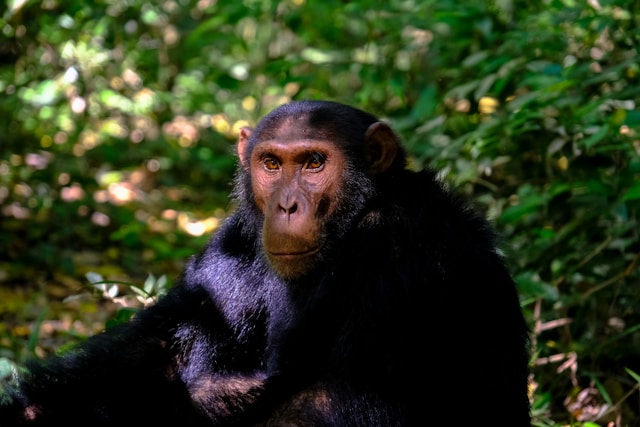Researchers at the University of St Andrews uncover striking similarities in turn-taking during chimpanzee and human conversations.
In a groundbreaking study, researchers from the University of St Andrews have unveiled astonishing similarities between chimpanzees and human conversational patterns. The research, conducted using the largest-ever database of wild chimpanzee gestures, highlights how chimpanzees engage in turn-taking conversations much like humans do.
The study, led by Professor Cat Hobaiter and Dr Gal Badihi, focused on five communities of wild East African chimpanzees in the rainforests and woodlands of Uganda and Tanzania. The researchers observed and analyzed over 8,500 gestures from more than 250 individual chimpanzees, revealing that chimpanzees exhibit a range of conversational timing that mirrors human interactions.
Embed from Getty ImagesChimpanzees were found to leave gaps between gestures similar to those observed in human conversations. The timing of these gaps varied widely, from interrupting a gesture before the signaller had finished to waiting up to eight and a half seconds before responding. In contrast, humans typically pause for just a fifth of a second during conversations. The variability in chimpanzee response times could be attributed to the natural setting of their interactions, which allows for a broader range of behaviours compared to control human settings.
Professor Hobaiter remarked on the significance of these findings, stating, “It’s amazing to see how close the chimpanzee and human timings were – and that, just like us, the chimpanzees sometimes even interrupted each other midway through a gesture.” This observation underscores the sophisticated nature of chimpanzee communication and its resemblance to human conversational norms.
The study also revealed subtle differences in conversational timing between chimpanzee groups. For example, Sonso chimpanzees in the Budongo Forest were observed to take longer to reply compared to the faster-reacting Kanyawara chimpanzees nearby. This variation is still under investigation, with researchers seeking to understand the reasons behind these differences.
Dr Badihi explained the role of communication in chimpanzee societies, noting that it is crucial for avoiding conflict and coordinating social interactions. “It’s fascinating to witness how chimpanzees interact with each other and the world,” she said. “Their societies are quite similar to ours – they spend time in large groups, break up into smaller parties, and then come back together. Communication helps chimpanzees achieve social goals, whether that’s negotiating for food or agreeing on grooming.”
The study’s insights offer a valuable perspective on the evolution of human conversational patterns. By examining the turn-taking structures in chimpanzee communication, researchers hope to gain a better understanding of how and when these conversational rules developed in humans.
Published in the journal Current Biology, this research provides a new dimension to our understanding of primate communication and its parallels with human interactions. The findings emphasize the intricate nature of chimpanzee gestures and their potential role in revealing the evolutionary roots of human conversational behaviours.
Analysis:
Political: The discovery of similar conversational patterns in chimpanzees and humans could influence conservation policies and animal research ethics. Understanding the cognitive and communicative abilities of primates might prompt more nuanced policies regarding their treatment and welfare, particularly in research settings.
Social: This study highlights the complexity of animal communication, challenging perceptions of human uniqueness in conversational abilities. It encourages a reevaluation of how we view and interact with other species, potentially fostering greater empathy and respect for animal intelligence.
Racial: The research underscores that sophisticated communication is not exclusive to humans, which may influence discussions on the cognitive and social capabilities of various animal species across different cultures. It emphasizes that understanding and respecting animal communication can bridge cultural gaps in how we perceive intelligence in non-human species.
Gender: While the study primarily focuses on chimpanzee communication patterns, future research could explore whether there are gender differences in how chimpanzees and other animals use gestures. This could provide further insights into the role of gender in communication across species.
Economic: The findings could impact industries related to wildlife conservation and primate research. A greater understanding of primate communication might lead to improved strategies for studying and preserving these species, potentially influencing funding and resource allocation in conservation efforts
